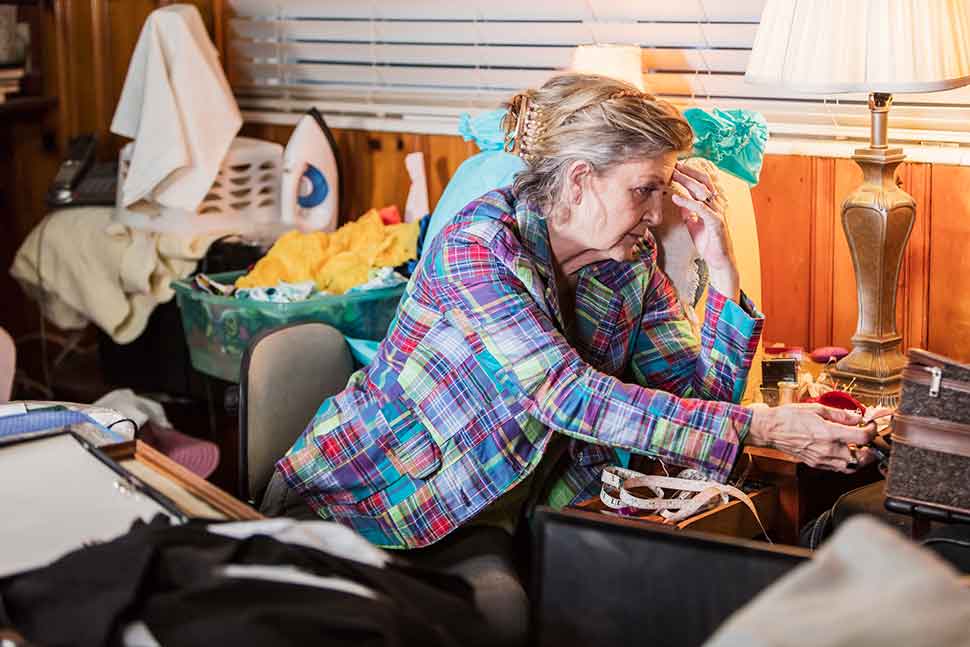A Quick Guide
Obsessive-compulsive and related disorders, such as OCD and hoarding disorder, involve intrusive thoughts and compulsive behaviors that disrupt daily life. Hoarding disorder is characterized by excessive accumulation of possessions and difficulty discarding them, leading to uncontrollable clutter and distress. It affects 2-6% of the population, often starts in adolescence, and may be influenced by personality traits, family history, and stressful life events. In this article, we will go over obsessive-compulsive and related disorders.
What are Obsessive-compulsive and related disorders?
Obsessive-compulsive and related disorders are a cluster of interrelated disorders like OCD and hoarding disorder etc that typically involve intrusive, irrational thoughts and compulsive behavior. Many of us occasionally have inappropriate ideas and frequently participate in repetitive activities. However, obsessive-compulsive disorder and other similar diseases amplify intrusive thoughts and compulsive behavior to the point that they interfere with daily life. Obsessive-compulsive and related disorders include the following:
- Obsessive-Compulsive Disorder OCD
- Body dysmorphic disorder
- Hoarding disorder
- Trichotillomania (hair-pulling disorder)
- Excoriation (skin-picking disorder)
Obsessions and recurrent behaviors or thoughts in reaction to those obsessions are characteristics of other disorders in this group.
Learn more about the link between OCD & Body Dysmorphic Disorder.
Here we will be discussing hoarding disorder.
What is Hoarding Disorder?
A person with a hoarding disorder hoards an excessive amount of things and keeps them in an unorganized way in an obsessive manner, which typically leads to uncontrollable clutter.
These people may have ongoing trouble getting rid of or parting with items due to a perceived need to keep them. When considering getting rid of the stuff, someone with a hoarding disorder feels distressed. Regardless of actual value, there is an excessive accumulation of these things.
Newspapers, periodicals, household products, and apparel are typical hoarded objects. Animals are frequently neglected by those with hoarding disorder who occasionally amass a huge number of them.
Hoarding is deemed a serious issue when:
- Routine activities are inhibited by the amount of clutter; for instance, a person may not be able to use their kitchen or bathroom or enter certain rooms.
- When someone attempts to eliminate the clutter, they get agitated and their relationship suffers. This is an example of how clutter may cause a person or their family significant distress or severely impact their quality of life.
Since many hoarders do not see their behavior as a problem or are unaware of how it affects them or others, hoarding disorders are especially difficult to treat.
Dangerous clutter can result from hoarding disorder. This disease may negatively impact a person’s quality of life in a number of ways. In their interpersonal, familial, and professional life, it may lead to stress and embarrassment. Additionally, it may result in unsafe and unsanitary living circumstances.
Watch: [Hoarding disorder – What’s the psychology behind it?]
Who is most affected by hoarding disorder?
In the US, between 2 and 6 percent of the population suffers from hoarding disorder.
Hoarding disorder frequently starts in teenage between the ages of 11 and 15 and becomes worse with time, becoming problematic by the mid-30s. Compared to younger people, older adults hoard more frequently.
People over the age of 60 and those who have additional mental health issues, particularly anxiety and depression, are more likely to suffer from hoarding disorder.
What are the causes of hoarding disorder?
While there is no definite cause of hoarding disorder. Some potential causes include the following:
Personality: Hoarding disorder is frequently accompanied by an uncertain temperament.
Family background: Having a family member with a hoarding disorder increases the risk of developing the condition.
Stressful circumstances: After going through a stressful life event, such as a loved one’s death, a divorce, being evicted, or losing belongings in a fire, some people may develop a hoarding disorder.
We hope you found this article helpful in understanding more about what hoarding disorder is along with how it’s a part of obsessive-compulsive and related disorders.



 Weaponized incompetence: what it is and how to detect it
Weaponized incompetence: what it is and how to detect it  ADHD & Insomnia: What You Need To Know
ADHD & Insomnia: What You Need To Know  The Hidden Struggles of Undiagnosed ADHD in Adults
The Hidden Struggles of Undiagnosed ADHD in Adults  Amnesia: Understanding Its Causes, Types, & Treatment
Amnesia: Understanding Its Causes, Types, & Treatment  Understanding Echolalia in ADHD: Causes, Symptoms, & Strategies for Support
Understanding Echolalia in ADHD: Causes, Symptoms, & Strategies for Support  Narcissistic Personality Disorder: Symptoms & Causes
Narcissistic Personality Disorder: Symptoms & Causes